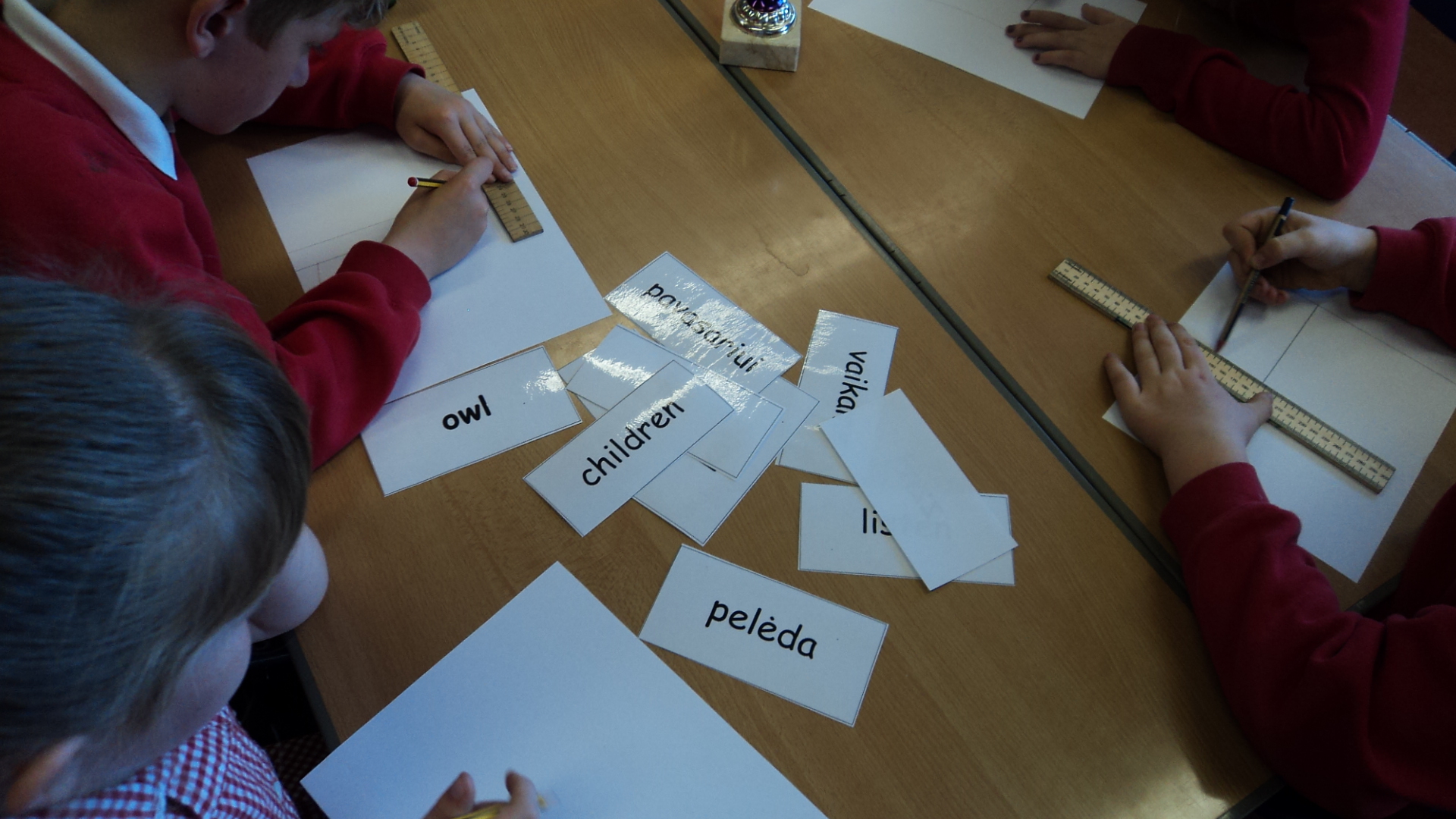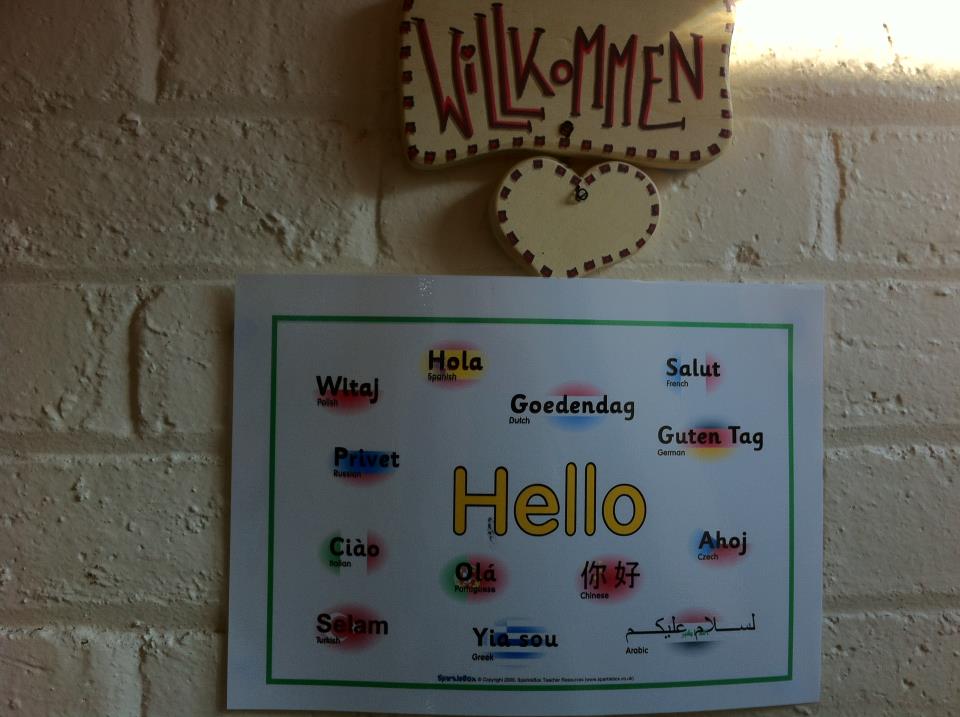Display the vocabulary on the wall to show that all languages are equally important and valid for ‘real learning’. Include multilingual captions on your science, maths and other curricula. Celebrate the diversity of languages spoken in the class.
Category Archives: EAL Support
LEARNING ANOTHER LANGUAGE
PROMOTE BILINGUALISM
Provide opportunities for bilingualism. Children should be encouraged to use their first languages:
Share games from other cultures;
Vocabulary labels in the child’s language;
Pair talking in the first language;
Writing in the home language and in English;
Use dual language dictionaries;
Brainstorm ideas and concepts in first language groups and in English;
Promote dual language reading;
Listen to audio texts in dual languages;
VALUE THE HOME LANGUAGE
WELCOME OTHER NATIONALITIES
EAL Assessment
“3.2 Children for whom English is not their home language
The communication skills of children for whom English is not their home language are not homogeneous. These children will be at different stages of learning English and one or more other languages. Learning English as an additional language is not a special educational need. Practitioners need to find out as much as they can about a child’s prior language experience and any education experienced elsewhere. Parents and carers, as the first educators, are an important source of information.
Underpinning the EYFS Profile assessment is the understanding that language is central to our sense of identity and belonging to a community, and that linguistic diversity is a strength that is recognised and valued. Practitioners may need to share with parents the understanding that a child’s home language development will help them learn English.
Parents also need to know that it is perfectly acceptable, even desirable, for the child’s home language to be used in the school or setting. Practitioners will need to observe the child over time and raise questions with the parents, and/or bilingual support assistants, to be confident about what the child knows and understands.
There are three aspects specific to the assessment of children for whom English is not their home language:
· development in their home language
· development across areas of learning, assessed through their home language
· development of English
Within the EYFS Profile the early learning goals for Communication and Language, and for Literacy, must be assessed in relation to the child’s competency in English. The remaining ELGs may be assessed in the context of any language – including the child’s home language and English.
This has implications for provision. The principles of good practice for children learning English are the principles of good practice for all children. Children must have opportunities to engage in activities and first hand experiences that do not depend solely on English for success, and where they can participate in ways that reveal what they know and can do in the security of their home language. For children to grow in confidence, and hence demonstrate their embedded learning, their environment must reflect their cultural and linguistic heritage and their learning be supported by a wide range of stimuli and experiences.”
Early Education
The British Association for Early Childhood Education
www.early-education.org.uk
International Children’s Digital Library
The mission of the International Children’s Digital Library Foundation is to promote tolerance and respect for diverse cultures by providing access to the best of children’s literature from around the world.
I invite you to explore this library. It is great!!!
Home Language Support for EAL
All practitioners should value linguistic diversity and provide opportunities for children to develop and use their home language in play and learning. This is part of respecting each child’s cultural background and help pupils settle in.
The home languages should be acknowledged and valued. Attempting to learn a few words or phases would be beneficial and parents would usually be very happy to assist in this.
Children should have the opportunity to express themselves and access dual language materials. Otherwise three or four years of language development can be easily disregarded. Research has shown that learning another language can greatly enhance thinking skills.
Maintaining and developing L1 (first language) skills will not hinder the acquisition of English. Skills learned in one language are transferable to another.
Parents should be reassured that maintaining and developing the home language will support learning English. Children benefit from bilingualism.
Good Practice for EAL
- Pupils with EAL should be placed according to their chronological age where possible.
- Pupils with EAL should be placed with more able groups, so that they get the best role models and can be helped to reach their potential more quickly.
- Pupils with EAL should have access to all classroom activities. Some will need to be supported or differentiated.
- Try to encourage a language activity or game with a group on a regular basis; to allow learners to acquire new vocabulary.
- Do not worry if the pupils are silent. This is normal and will improve as they settle in socially and gain confidence.
- Use pictures, photos, artefacts, drawings, gestures, maps and graphics to aid understanding.
- Use other pupils to act as a buddy to help the child and look after them at breaks; to show them the ropes, etc.
- Allow the pupil to copy from others.
- For younger pupils, or those not literate in their first language, a pictorial dictionary is very helpful.
- Please encourage the use of a bilingual dictionary and give glossaries of new topics in advance, so that pupils can look up meanings and search in their native language beforehand.
- Please be prepared to repeat instructions.
- Include the pupils with EAL in paired reading schemes.
- Access “Learning in 2+Languages”.
EAL Induction Check List
- Ensure friendly body language.
- Provide a place of safety in the room (observation point).
- Arrange for “buddies” to support the child socially and in class.
- Appoint good role models in the table group.
- Explain the “school routine”, e.g; bell, toilet, school layout, timetable and who should collect the child and where.
- Explain the health and safety procedures, e.g. fire evacuation.
- Explain social norms and boundaries of school.
- Don’t worry if pupils are silent.
- Welcome “acceptance and interest of pupil’s culture”.






